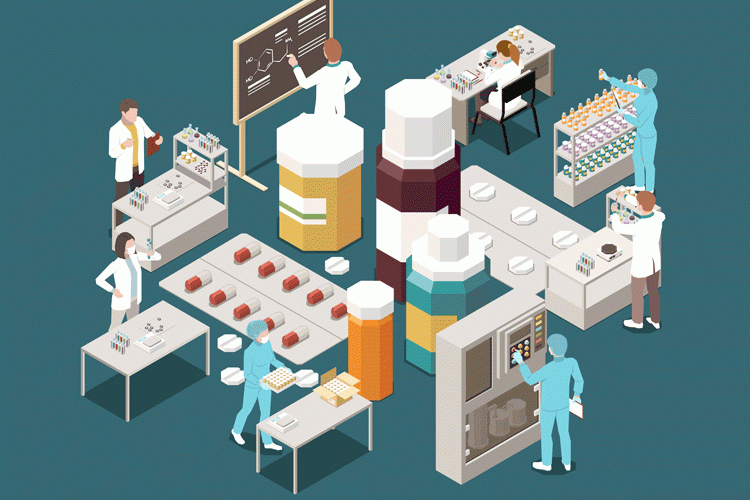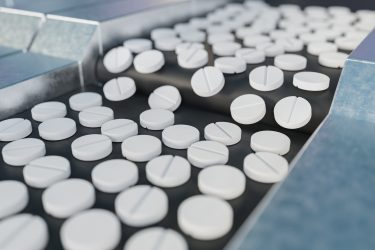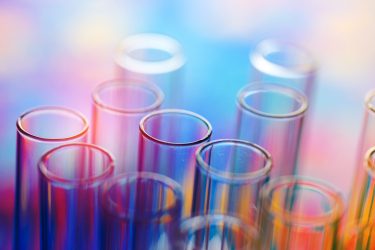The quest for efficiency – moving towards continuous processing
Posted: 29 April 2020 | Dr Chris Palmer (WMFTG), Dr John Milne (National Institute for Bioprocessing Research and Training), Jim Marjeram (O’Hara Technologies) | No comments yet
There are many challenges faced by the biopharmaceutical industry in order to develop and provide sufficient drugs to treat a growing and ageing population. This article discusses whether continuous processing provides the solution.


Today the pharmaceutical industry faces the challenge of an ageing population. Life expectancies across the developed world are increasing, thanks to growing wealth and better medicines. Germany’s average life expectancy has increased by more than 10 years since 19701 and in Latin America the increase is dramatic, with average life expectancy increasing by almost 20 years since 1960.2 One consequence of people living longer, combined with rising GDP, is that more patients are now living with chronic, complex conditions, such as heart disease, Alzheimer’s and type II diabetes. In the US, these are some of the most common causes of death, with millions more patients living with these diseases.3 Rates of diabetes in Mexico are increasing at three times the rate of population growth and almost 20 percent of public healthcare spending is on diabetes.4 In Japan, on average men suffer from at least one serious disease during their last nine years of life, while women suffer from at least one serious disease during their last 12 years of life.5


The expense of treating these patients is putting pressure on healthcare systems who, in turn, expect pharmaceutical companies to supply medications at lower costs. This is especially true in Europe and Japan where government funding restrictions mean severe constraints on drug reimbursement prices.6 US health expenditures are projected to increase by $3.5 trillion between 2010 and 2040.7 In Brazil, healthcare costs are expected to rise dramatically from seven percent of GDP in 2006 to 13 percent of GDP in 2030.8 Developing countries, which tend to focus more on the production of affordable generics,9 are also experiencing pressure on drug prices. In 2018, the bulk buying power of the Chinese government enabled it to reduce the cost of 36 drugs by 44 percent in order for these drugs to be covered by government insurance. Similarly, India, as the world’s leading provider of generics, encourages competition between pharmaceutical companies which places additional pressure on drug prices.10
The pharmaceutical industry is responding to this pressure through process intensification, a concept that dates back to the 1970s. Through novel technologies and new processing techniques, the aim is to reduce timelines, cut costs and increase efficiencies.11 Among the methods increasingly being adopted is perfusion cell culture, also called upstream continuous culture. Originally developed in the 1980s, perfusion involves constantly removing cell-culture fluid from a bioreactor while adding fresh media.12 When compared to fed-batch processing, perfusion produces greater product yields with better lot-to-lot consistency in products.13,14 In the future, both upstream and downstream processes in biomanufacturing will happen continuously and with high degrees of automation.
Where is continuous processing today?
Continuous processing is common in many industries, but – due to regulatory concerns – has only been taken seriously by pharmaceutical companies in the last five years. The aim is to reduce the costs of biomanufacturing by reducing down-time between production lots, resulting in greater productivity. In a survey of senior executives from biopharmaceutical companies, approximately 20 percent saw improvements to some aspect of upstream and downstream manufacturing as a consistent concern to the industry.9 A fully continuous system seamlessly integrates upstream and downstream processes to generate a constant flow of product. Downtime between batches is reduced and manufacturing plants can be smaller if only small amounts of product are created at a time, while ultimately delivering greater total product. In particular, facilities can dispense with storage tanks to hold culture and media between processing steps. Perfusion processing is becoming increasingly popular with 33.2 percent of biomanufacturers keen to test continuous perfusion within the next 12 months.9 One advantage is that cell culture is continuously bled off a bioreactor in small quantities, allowing for downstream processing in smaller volumes than in a traditional fed-batch process. In addition, perfusion culture processes can be longer in duration, reducing time for cleaning, yet product quality remains more consistent as a result. Smaller production bioreactors can also typically be used in perfusion cultures compared with those in traditional stainless-steel bioreactors. This also has an immediate impact by reducing the required cleaning validation burden.
Continuous processing: regulatory and quality challenges
With traditional bioprocessing techniques, drug batches usually take two to 14 days to produce. Continuous processing allows for longer runs before the equipment is changed – sometimes as long as 90 days. These longer process cycles create challenges for pharmaceutical companies, such as maintaining the sterility of equipment, meeting regulatory requirements and checking product quality. Among other challenges in continuous processing is ensuring product quality is maintained throughout a longer process cycle. Part of this involves maintaining the sterility of the equipment, which has encouraged manufacturers to move towards closed, automated systems with minimal human intervention.

Meeting regulatory requirements is also a challenge for manufacturers. Although regulatory bodies, such as the US Food and Drug Administration (FDA) and European Medicines Agency (EMA), have generally been supportive of advanced manufacturing techniques,15 there is no specific regulatory guidance for qualifying single‑use systems for drug manufacturing. As a result of this gap in regulations, several industry bodies have provided best practice recommendations and standards to the market.
However, challenges remain around sterility, sampling and extractables/leachables in single-use systems. In particular, there is greater concern in Western Europe where 17.1 percent of respondents to a recent Bioplan report cited that “leachables and extractables are a concern”, compared to 7.1 percent in the US.9 This concern could be further exacerbated by materials being in contact with the drug product for a longer duration, potentially resulting in more leachables being released by the single-use systems during continuous processing. As a result, there is a greater onus on drug manufacturers to ensure that the single-use components used are biocompatible and traceable throughout the production process and that the extractable/leachable profile of the single-use component is risk assessed for the company’s product fluid stream. Suppliers of single-use components can help in this respect, by testing their products and supplying documentation to the end user to support their risk assessments and regulatory submissions. Verifying product quality is another aspect to consider during continuous processing. Sampling to check for product quality and contamination should take place while the process is ongoing. When a sample is found to be contaminated, it is important for manufacturers to isolate the contaminated product and determine when contamination began. This contrasts with a standard batch process where there is a finite quantity of product to be checked and it is much easier to isolate a contaminated batch.
From a regulatory point of view, the FDA and other regulators have defined a batch as ‘the production period, quantity of material processed, quantity of material produced or production variation’.16 They recommend that manufacturers define the batch size prior to each production run. Existing sampling systems also need incorporating into a continuous process. For example, pH meters and dissolved oxygen (DO) probes may need calibration after a few hours of use. Companies must consider how to calibrate probes and take multiple samples in a way that is both reliable with a single-use system and that reduces contamination.
About the authors




Jim Marjeram is a graduate of Humber College with a specialty in Electro-Mechanical Engineering Technology. Jim has worked in the pharmaceutical industry for over 30 years, concentrating on solid dosage solutions. Most of Jim’s career has been with O’Hara Technologies Inc. which has grown from local engineering firm to world class supplier of engineered pharmaceutical tablet coating and process systems. Jim has worked in diverse roles from product development to Sales Director.


Dr Chris Palmer is Tubing Product Manager at Watson- Marlow Fluid Technology Group. He gained his PhD at Cardiff University and has over 20 years’ experience in the pharmaceutical industry, including roles at Pfizer and ConvaTec. Chris has worked for WMFTG for 10 years and has extensive experience in biopharmaceutical manufacturing technologies.
References
- https://www.ey.com/en_gl/life-sciences/why-an-aging-population-means-opportunity-but-a-lot-of-work-too
- https://data.worldbank.org/indicator/SP.DYN.LE00.IN?locations=ZJ
- https://www.medicalnewstoday.com/articles/282929.php#stroke-and-cerebrovascular-diseases
- https://www.mckinsey.com/~/media/mckinsey/dotcom/client_service/Public%20Sector/PDFS/Perspectives_on_Healthcare_in_Latin_America.ashx
- https://www.ey.com/en_gl/life-sciences/why-an-aging-population-means-opportunity-but-a-lot-of-work-too
- https://www.pwc.com/il/en/pharmaceuticals/pricing-pressures-shrinking-margins.html
- https://www.pwc.com/gx/en/industries/healthcare/emerging-trends-pwc-healthcare/depleting-resources.html
- https://www.mckinsey.com/~/media/mckinsey/dotcom/client_service/Public%20Sector/PDFS/Perspectives_on_Healthcare_in_Latin_America.ashx
- 16th Annual Report and Survey of Biopharmaceutical Manufacturing Capacity and Production: A study of biopharmaceutical developers and contract manufacturing organisations. April 2019. BioPlan Associates.
- https://www.pharmaceutical-technology.com/features/cost-control-drug-pricing-policies-around-world/
- https://www.aiche.org/resources/publications/cep/2018/march/realize-potential-process-intensification
- https://bioprocessintl.com/upstream-processing/perfusion-cell-culture/a-look-at-perfusion-the-upstreamcontinuous-process/
- https://bioprocessintl.com/upstream-processing/perfusion-cell-culture/set-perfusion-process-higher-productivityquality/
- https://www.technologynetworks.com/biopharma/articles/developments-in-continuous-cell-culture-295885
- https://www.fda.gov/media/85366/download
- https://www.fda.gov/media/121314/download
Issue
Related topics
Biopharmaceuticals, Drug Manufacturing, Industry Insight, Processing, QA/QC, Regulation & Legislation, Single Use









